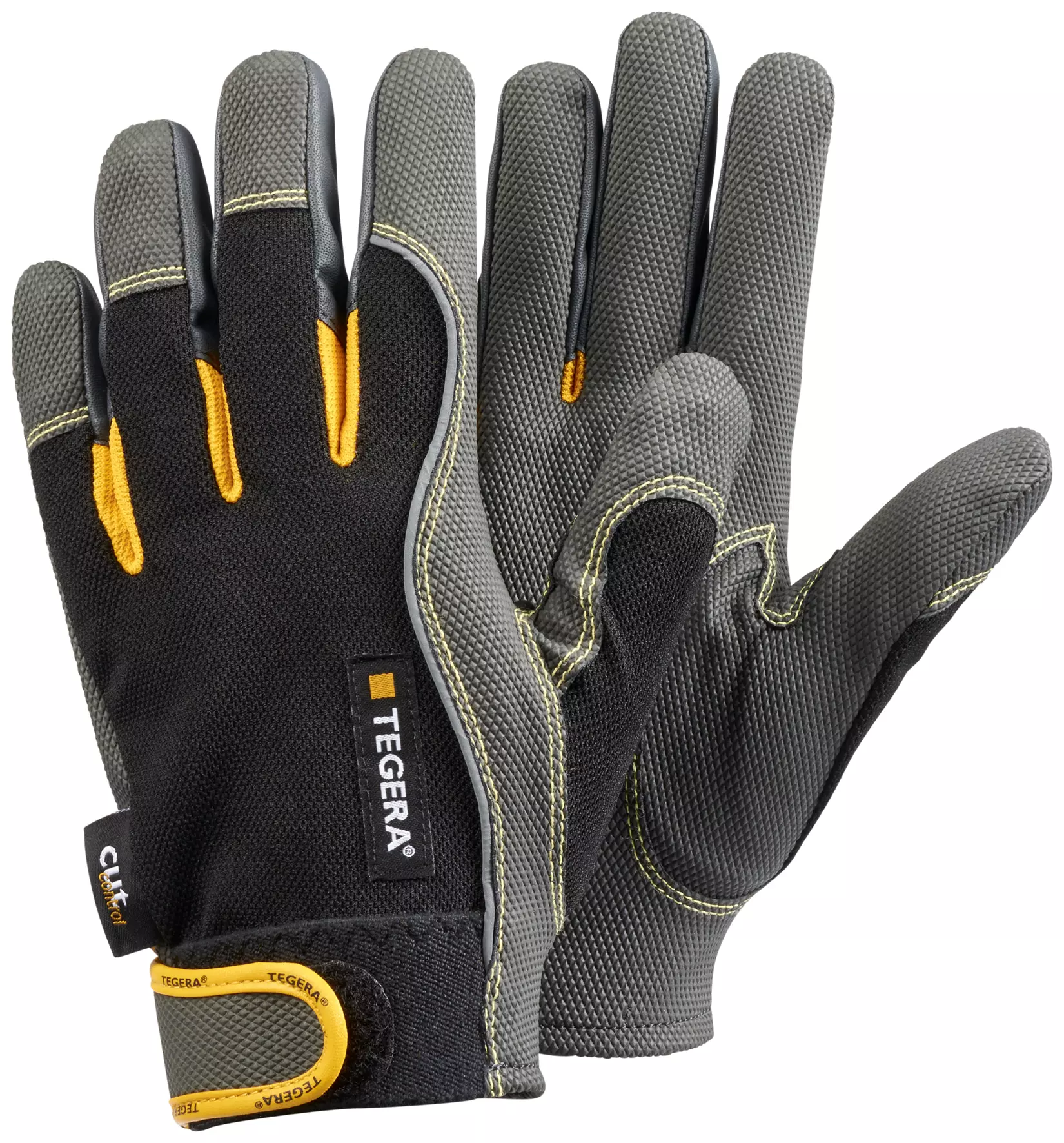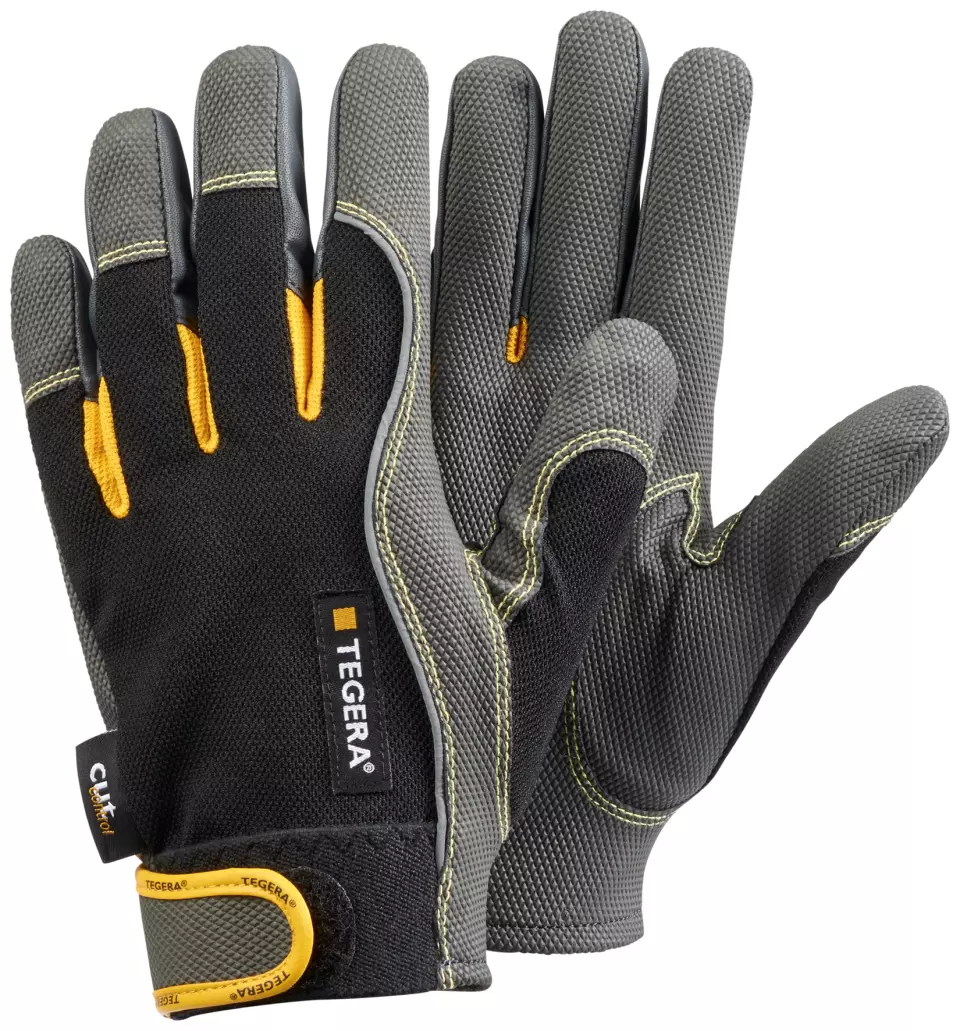
Features You'll Love

Cuff Style · Hook And Loop
Determines how the glove secures around the wrist, affecting fit, comfort, and protection coverage at the wrist area.

Support · Reinforced Fingers
Identifies areas of the glove with additional reinforcement for enhanced protection and durability in high-wear zones.
175,21 €
Price per 6 pairs
29,20 € / pair
Choose size
Free delivery
Features You'll Love

Cuff Style · Hook And Loop
Determines how the glove secures around the wrist, affecting fit, comfort, and protection coverage at the wrist area.

Support · Reinforced Fingers
Identifies areas of the glove with additional reinforcement for enhanced protection and durability in high-wear zones.
Product description
TEGERA® 9121, Cut resistant glove, half liner, 0.7 mm Microthan® , textured palm, polyester, cut resistant class C, KEVLAR® fibre, Cat. II, cut protection in palm only, reinforced seams, does not contain chromium